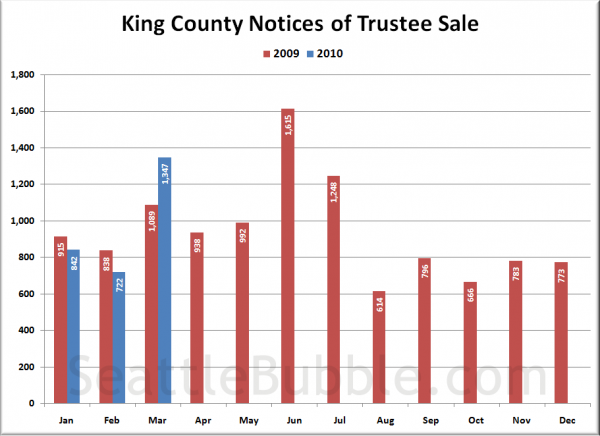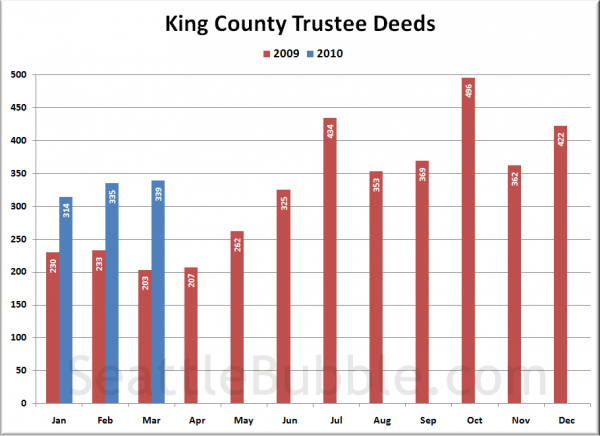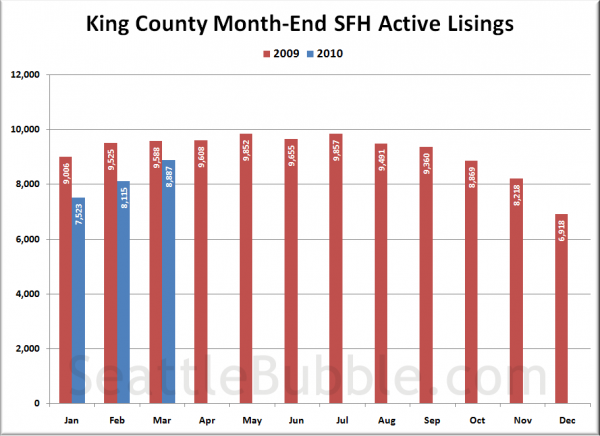Because of its history, its location and the nations which surround it, Mongolia would seem the last country in the world to host annual Pentagon-led military exercises and to be the third Asian nation to offer NATO troops for the war in Afghanistan.
From the early 1920s until the breakup of the Soviet Union in 1991 Mongolia was the latter nation’s longest-standing and in many ways closest political and military ally, its armed forces fighting alongside those of the USSR against the Japanese in World War II. It was not a member of the Warsaw Pact as that alliance was formed in Europe six years after and in response to the creation of NATO in 1949, but Mongolia was a military buffer between the Soviet Union and the Japanese army in China in the Second World War and between it and China during the decades of the Sino-Soviet conflict.
Mongolia is also buried deep within the Asian continent and is the world’s second-largest landlocked nation next to Kazakhstan, which is only 21 miles from its western border. Those two countries along with North Korea, impenetrable in most every sense of the word, are the only three that border both China and Russia.
Russia abuts Mongolia along its entire northern frontier and China along its eastern, southern and western borders. There is no way to enter the country except by passing through or over Russia and China.
As such Mongolia would have appeared to be a refuge of non-alignment in a world of rapidly expanding U.S. and NATO penetration of increasingly vast tracts of the earth’s surface.
But in the post-Cold War period no country is beyond the Pentagon’s reach, either inside or on its borders.
In the last decade alone the U.S. has acquired bases and other military installations and stationed its armed forces throughout parts of the world that it had never penetrated during the Cold War era, including:
Africa: Approximately 2,000 troops and the Pentagon’s Combined Joint Task Force-Horn of Africa at Camp Lemonnier in Djibouti in the Horn of Africa.
Black Sea: Seven new air and training bases in Bulgaria and Romania and the de facto control of air, navy, infantry and surveillance bases in Georgia.
Baltic Sea: The activation in April of a Patriot Advanced Capability-3 theater interceptor missile battery in Eastern Poland with an initial contingent of 100 troops to run it.
Middle East: Air bases, forward operating bases, base camps, weapons storage facilities and troops transit centers in Iraq, Jordan and Kuwait and a long-range (2,900-mile) interceptor missile radar facility in Israel staffed by 120 U.S. military personnel.
Central Asia: An air base in Kyrgyzstan through which 35,000 U.S. and NATO troops transit each month for the war in Afghanistan and plans for a new special forces “anti-terrorist” training center in the nation.
South Asia: A proliferation of infantry and air bases in Afghanistan, including the mammoth Bagram Air Field with 25,000 military personnel and contractors. The Bagram military complex has been more than tripled in size since the 2001 invasion and is currently undergoing yet further large-scale expansion.
East Asia: The return of the U.S. military to the Philippines after being ordered to leave by the country’s Senate in 1991 with at least 600 troops and two permanent structures in Camp Navarro in Mindanao where the U.S. Joint Special Operations Task Force-Philippines (JSOTF-P) is based.
South America: Seven new military, including air and naval, bases in Colombia agreed upon last summer.
Central America: In addition to the U.S. retaining the use of the Soto Cano Air Base in Honduras for its 550-troop Joint Task Force-Bravo after the military coup d’etat of last June 28, a report surfaced in September of 2009 that U.S. Secretary of State Hillary Clinton had reached an agreement with new Panamanian President Ricardo Martinelli for the opening of two new American naval bases, one each on the Caribbean and Pacific coasts.
Indian Ocean: U.S. Africa Command deployed lethal Reaper “hunter-killer” drones, spy planes and over a hundred service members to Seychelles late last year.
South Pacific: A secretive military satellite base in Western Australia was approved in 2007. The massive expansion of the Andersen Air Force Base and construction of barracks for 8,000 Marines on Guam is underway.
New bases on every inhabited continent outside the Pentagon’s own.
Mongolia, however remote it is and previously inaccessible it may have been, is no exception to the wave of worldwide U.S. military expansion.
On March 29 NATO announced that the nation had become the 45th country to contribute troops for the North Atlantic military bloc’s International Security Assistance Force (ISAF) in Afghanistan. The 44th nation to be formally dragooned into NATO’s first ground and first Asian war was Montenegro, the world’s newest (universally recognized) state.
There are in fact more than 45 countries with troops subordinated to NATO in the Afghan war zone in addition to those from all but six European nations, two South Pacific ones (Australia and New Zealand), a Persian Gulf state (the United Arab Emirates), all three South Caucasus nations (Armenia, Azerbaijan and Georgia), Asia’s Singapore and South Korea and the U.S. and Canada.
Last November the Financial Times confirmed that Colombia was deploying infantry forces to Afghanistan under NATO command, in December the ISAF website divulged that Egyptian military personnel are operating in the east of the country [1], and this January the U.S. armed forces newspaper Stars and Stripes revealed that troops from Bahrain and Jordan were already in the war zone.
The inclusion of Colombia and Egypt is particularly significant as now troops from all six populated continents are among those of fifty-some-odd nations serving under NATO – soon to number 150,000, with almost all U.S. forces placed under NATO command – in not only a single war theater but in one country. The world has never before witnessed such a widespread military network concentrated on and in one small land.
Mongolia’s Defense Minister Luvsanvandan Bold was at NATO headquarters in Brussels on March 29 to formalize his nation’s deployment of an estimated 250 more troops for the Afghan war. He was accompanied by his country’s chief of the general staff and secretary of the National Security Council.
The delegation met with NATO’s Deputy Secretary General Claudio Bisogniero and the “meeting marked the formal recognition of the Mongolian contribution to the International Security Assistance Force (ISAF).”
NATO’s number two civilian leader said on the occasion that “These are important agreements, not just from a legal perspective, but chiefly to mark Mongolia’s full recognition as a member of ISAF and a key contributor to the international mission.” [2]
The military bloc announced that as Mongolia is now an official Troop Contributing Nation, it will be invited to the 56-nation NATO foreign ministers meeting to begin on April 23 in Estonia.
The Mongolian entourage also visited Supreme Headquarters Allied Powers Europe, NATO’s main military command, outside Mons, Belgium, where it was accorded an honor guard reception and met with the Deputy Supreme Allied Commander Europe, General Sir John McColl.
NATO now has a military partner squeezed between Russia and China.
A report from last year placed matters in historical perspective. Deployment to Afghanistan will assist “The Mongolian army, which has not seen major combat since assisting the Soviet invasion of Manchuria in 1945,” to “acquire vital, on-the-ground experience.” The mission “will mark its largest military presence in Afghanistan since the age of Genghis Khan.” [3]
However, the U.S. first secured Mongolian troops for the war in Afghanistan much earlier, in 2003, and Genghis Khan was invoked for the occasion, which should cast in doubt the references to peacekeeping used in subsequent citations. The latest development signals the transition from a bilateral U.S.-Mongolian military partnership to the broadening of NATO’s role in Asia and the further consolidation of an Asian NATO.
“The landlocked nation has previously operated artillery training teams in Afghanistan and sent troops to serve with the U.S.-led occupation of Iraq,” and in the course of doing so “Mongolia’s involvement in Iraq and Afghanistan has helped cement its alliance with the United States and secure grants and aid.” [4]
U.S. Marines were deployed to the capital of Mongolia, Ulan Bator (Ulaanbaatar), “for the first time in the history of the Marine Corps, Aug. 18, 2003 in support of Khaan Quest ‘03.” [5]
The live-fire military exercise, which has been held every year since, is named after Genghis Khan. The announced purpose of the training exercises, run by the Pentagon’s Pacific Command, has been to upgrade Mongolian soldiers to United Nations peacekeeping standards. Having little else in the way of exports, the nation’s troops are paid comparatively handsomely for missions abroad.
As to the nature of the peacekeeping missions the Pentagon has been training Mongolia’s armed forces to conduct, after the first Khaan Quest exercises – in which they were instructed by U.S. Marines in “peacekeeping operations such as check point, patrolling, immediate action drills, riot control and more” [6] – in August of 2003, the U.S. deployed troops they had instructed to Iraq in September and to Afghanistan in October.
The second rotation of Mongolian troops to Iraq occurred in early 2004 and the second Khaan Quest U.S.-led military exercises were staged in Mongolia the same year.
Mongolia was invited to participate in the Cobra Gold exercises in Thailand, Asia’s largest war games, in 2004 for the first time. The roster also included the U.S., Thailand, the Philippines and Singapore.
The following year U.S. Marines returned to the nation for Khaan Quest 2005 and almost two weeks of joint training with the Mongolian Armed Forces.
The Marines and 130 local troops engaged in what was described as a mock battle 65 miles west of the capital, a repeat of similar engagements in 2003 and 2004. [7]
Five months after the April exercises Mongolia’s President Nambariin Enkhbayar visited Hawaii on his way home from the United Nations to meet with the top commander of the U.S. Pacific Command, whose “vast area of responsibility [consists of] half the surface of the globe that includes half its population spread across 36 countries,” [8], Admiral William Fallon.
After the meeting the Mongolian head of state was quoted as saying “We have been discussing how to cooperate to expand and develop the capacity of the Mongolian armed forces and peacekeeping operations,” and that he and Fallon “found complete understanding” about collaboration between the Pentagon’s Pacific Command and the Mongolian armed forces. [9]
The following month Donald Rumsfeld became the first U.S. secretary of defense to visit Mongolia and addressed soldiers from the nation who had served in Iraq and Afghanistan. Until the last moment he also was to have visited China’s and Russia’s other joint neighbor, Kazakhstan, to “discuss increasing U.S. help in their [Kazakhstan's and Mongolia's] military modernization programs” on his way to a NATO meeting in Lithuania to meet “with Ukraine’s defense minister about that country’s effort to join the organization.” [10]
Speaking of Mongolian officials’ military cooperation with the U.S., he said “Located between Russia and China, they decided that their democracy, stability and future was mostly tied to the relationships they could create.” [11]
It was confirmed at the time that six U.S. Marine and one Army officer were assigned to the nation’s military and that “With US funding and training, the Mongolian government built a peacekeeping force of 5,000 troops from its current force of 11,000 troops.” [12] Almost half its men under arms are available for deployments abroad.
On November 21st of 2005 President George W. Bush followed in Rumsfeld’s footsteps, arriving for a one-day visit to Ulan Bator with his secretary of state Condoleezza Rice. As Rumsfeld was the first Pentagon chief, so Bush was the first standing U.S. head of state to visit Mongolia. Both were on recruitment missions, and not just for the wars in Iraq and Afghanistan. A report on the U.S. defense chief’s trip included the observation that “In Mongolia, Rumsfeld tried to nurture a relationship that may be a hedge against a shift in China’s current path.” [13]
Bush’s comments while there didn’t spare his hosts an ex post facto swipe at the nation’s political past (until last May the ruling party’s name was still that of the communist period) and an evocation of the Genghis Khan mythos (and ethos): “Free people did not falter in the Cold War, and free people will not falter in the war on terror. The Mongolian armed forces are serving the cause of freedom, and U.S. forces are proud to serve beside such fearless warriors.” [14]
Months afterward it was revealed that Rumsfeld had promised impoverished Mongolia (with a population roughly equal to that of Chicago) $11 million worth of U.S. military equipment. [15]
In January of 2006 Mongolia announced that, despite a transition in the nation’s cabinet underway at the time, it would keep its U.S.-trained troops in Iraq and Afghanistan.
In the middle of the year the U.S. State Department disclosed that “Rumsfeld said the United States plans to join Mongolia in an upcoming multinational exercise that is intended to strengthen regional cooperation in peacekeeping.
“The exercise, called ‘Conquest,’ is scheduled for late summer.” [16] Once again the alleged peacekeeping nature of America’s military role in Mongolia was belied by the name of the operation.
During the summer the Pentagon conducted the Khaan Quest 2006 exercises in which “300 American military personnel [trained] 600 Mongolian troops, as well as 200 others from Bangladesh, Fiji, South Korea, Thailand and Tonga,” at what by that time was a permanent training base at Tavan Tolgoi (Five Hills).
It was announced before the August war games that “The training is part of the millions of dollars that President Bush promised during his visit to Mongolia last year.” [17]
During Khaan Quest 2006 “Admiral William J. Fallon, head of the U.S. Pacific Command, greeted media and soldiers, praising the peacekeeping exercises and stressing the importance of Tavan Tolgoi as an international training site.” [18] The next year Fallon took over Central Command whose area of responsibility includes both Iraq and Afghanistan.
The two-week military exercises were held “on the windswept steppe of Mongolia, a key American ally strategically placed between Russia and China.”
To demonstrate its appreciation of the role that Mongolia plays in U.S. geostrategic plans for Eurasia, three months earlier “The U.S. Congress passed a resolution…commending Mongolia on marking 800 years since Genghis Khan forged a nation out of the vast territory inhabited by disparate tribes, and praising its ‘commitment to democracy, freedom and economic reform.’”[19]
In late July and early August Mongolian air force officials were invited to Operation Cooperative Cope Thunder in Alaska, “the largest multilateral air combat exercise in the northern Pacific, with about 1,300 personnel participating” from the United States, NATO, Australia, Canada, Germany, Japan, South Korea and Sweden. [20]
In October the seventh rotation of Mongolian troops “left for Iraq on board a special flight” to “join U.S. soldiers on patrol missions and maintaining order in the Iraqi capital [of] Baghdad.” [21]
By 2007 the Pentagon’s military integration of Mongolia had progressed beyond the point of the latter merely sending observers to U.S. war games and in July Mongolian airmen joined colleagues from the U.S., Spain, Thailand and Turkey for the two-week Red Flag-Alaska exercises in which “80 aircraft and 1,500 service members from the six countries [flew] together in this multinational exercise that provides realistic combat training….” [22]
The same month, at a time when almost 1,000 of its troops had served in the Iraq war zone, The Times of London in a feature called “War earns Mongolia rich peace dividend” summed up the results of four years of direct U.S.-Mongolian military cooperation:
“[Mongolian] soldiers are fed, given new uniforms, battle armour and night-vision equipment when they arrive in Iraq and President Bush has promised Mongolia $14.5 million to renovate its Armed Forces.
“The country’s readiness to fight in Iraq was also key to winning it a highly sought-after first-round place in Washington’s $5 billion Millennium Challenge Account.” [23]
Khaan Quest 2007 expanded to include over 1,000 troops from the U.S., Mongolia and seven other Asian and Asia-Pacific nations – Bangladesh, Tonga, South Korea, Brunei, Sri Lanka, Indonesia and Cambodia – to “improve their interoperability” and the “multinational speed of response, mission effectiveness…and unity of effort. [24]
The 2008 Khaan Quest exercises added troops from France, India, Nepal and Thailand to the U.S. Pacific Command-run operation.
The BBC reported at the time:
“As exercises go, these ones are relatively small – but they are symbolic.
“They represent part of Mongolia’s ongoing efforts to build ties that extend beyond its two super-power neighbours.” [25]
In July of 2008 Mongolia was invited to participate in the 20-nation Pacific Rim Airpower Symposium held in the capital of Malaysia. Mongolia doesn’t border the Pacific or even have a navy. It is separated from that ocean by hundreds of miles of Chinese and Russian territory.
The four-day event was hosted by the Royal Malaysian Air Force and U.S. Pacific Air Forces’ 13th Air Force, and included participants from the U.S., Malaysia, Mongolia, Australia, Bangladesh, Brunei, Cambodia, Canada, Chile, India, Indonesia, Japan, Nepal, New Zealand, the Philippines, Singapore, South Korea, Sri Lanka, Thailand and Vietnam. The commander of the 13th Air Force, Lieutenant General Loyd Utterback, remarked at the time: “Through this symposium, we have a great opportunity to share and understand what each nation brings to the battlefield.” [26]
Mongolian forces were also part of a U.S.-led military exercise on the order of Khaan Quest in Bangladesh in April of 2008 along with troops from the U.S. and the host nation, Brunei, Cambodia, India, Indonesia, Malaysia, Nepal, South Korea, Sri Lanka and Tonga.
Following by three years what appeared like an attempt at a “color revolution” scenario in Mongolia in March and April of 2005 ahead of a presidential election (on the heels of successful equivalents in Georgia, Ukraine and Kyrgyzstan), riots broke out in Ulan Bator after parliamentary elections in the summer of 2008. The standard “color revolution” technique. Molotov cocktails were hurled into the offices of the ruling Mongolian People’s Revolutionary Party and at least five people were killed and 300 injured, leading to a four-day state of emergency being declared. (The protests were led by supporters of the Democratic Party of Tsakhiagiin Elbegdorj, about whom more later.)
Five months afterward, in early November, Mongolia and Russia held a joint peacekeeping training exercise in the first country, the only joint maneuvers of any sort since the breakup of the Soviet Union seventeen years earlier. In the interim the Pentagon had led six comparable exercises in Mongolia from 2003-2008.
Mongolia was granted observer status in the Shanghai Cooperation Organization (whose members are China, Russia, Kazakhstan, Kyrgyzstan, Tajikistan and Uzbekistan) in 2004, but in the succeeding six years has made no efforts to gain full membership.
In July of 2009 the nation’s military announced that it would expand upon previous deployments to Afghanistan, limited to artillery training units, by sending a full contingent of troops as part of “cooperation that stems from its ‘third neighbor’ policy to reach out to allies other than China and Russia,” meaning the U.S. and NATO. [27]
On August 15 the twelve-day Khaan Quest 2009 exercises were launched under U.S. leadership. In addition to American and Mongolian forces, troops from Cambodia, India, Japan and South Korea participated.
“The exercise is the most visible form of US-Mongolian military cooperation,” which “grew out of Mongolia’s participation in the US-led war in Iraq, the first combat action that Mongolian troops had seen since World War II.”
“In addition to the Khaan Quest exercise, US military cooperation with Mongolia includes the Marine Leadership Development Exchange Program, an initiative unique to Mongolia in which a small group of US Marines ‘embeds’ with Mongolian forces full time to help train them in western military methods.” [28]
Developing out of the annual Khaan Quest exercises, a Mongolian Expeditionary Force consisting of “elite soldiers selected by Mongolian Armed Forces Maj. Javkhlanbayar Dondogdorj specifically” for Afghanistan are to be deployed to the war front in that country. [29]
The exercises in Mongolia were preceded by a United Nations Staff Officers Course run under the U.S. State Department’s Global Peace Operations Initiative with officers from the U.S., Mongolia, Germany, Bangladesh, India, Malaysia, the Philippines, Singapore and Thailand.
Khaan Quest 2009 closed with a ceremony which featured “a parade by the graduating platoons and speeches by the chief of staff of US Pacific Command (which sponsored the exercise), as well as Mongolia’s defense minister and chief of armed forces.” [30]
This year’s Khaan Quest 2010 “is scheduled to begin August 2010 and event officials are expecting a larger participating force” than in 2009. [31]
Earlier in the year, on May 24, the candidate of the Democratic Party, Tsakhiagiin Elbegdorj, won the nation’s presidential election, becoming the first president never to have been a member of the Mongolian People’s Revolutionary Party and the first to have been educated in the West. In fact he received a diploma from the University of Colorado at Boulder’s Economic Institute in 2001 and a Master of Public Administration degree from Harvard University’s John F. Kennedy School of Government the following year.
The nation’s military ties with Washington and with NATO can be expected to grow even firmer and more extensive under the Elbegdorj administration.
With its vast expanse (over 600,000 square miles) and its sparse population (less than 3 million people with almost 40 percent living in the capital), Mongolia is the optimal location for U.S. military surveillance (ground, air and satellite) to monitor China and Russia simultaneously. The nation’s new U.S.-educated head of state is not likely to deny Washington’s requests in that regard.
Notes
1) International Security Assistance Force
American Forces Press Service
December 16, 2009
2) North Atlantic Treaty Organization, March 29, 2010
3) Reuters, July 22, 2009
4) Ibid
5) Marine Corps News, August 28, 2003
6) Ibid
7) Xinhua News Agency, April 17, 2005
8) U.S. Department of Defense, May 18, 2009
9) Associated Press, September 20, 2005
10) Voice of America News, October 16, 2005
11) United News of India, October 22, 2005
12) Ibid
13) Associated Press, October 25, 2005
14) USA Today, November 21, 2010
15) Regnum (Russia), March 13, 2006
16) U.S. Department of State, June 5, 2006
17) Mongolia Web, July 30, 2006
18) Mongolia Web, August 21, 2006
19) Reuters, August 11, 2006
20) United Press International, July 28, 2006
21) Xinhua News Agency, October 4, 2006
22) Air Force Link, July 26, 2007
23) The Times, July 16, 2007
24) Ulan Bator Post, August 2, 2007
25) BBC News, September 10, 2008
26) Air Force Link, July 23, 2008
27) Reuters, July 22, 2009
28) EurasiaNet, August 25, 2010
29) Khaan Quest 2009, August 21, 2009
30) EurasiaNet, August 25, 2010
31) Khaan Quest 2009, August 25, 2009
Rick Rozoff is a frequent contributor to Global Research.








